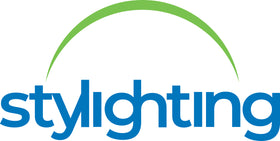Solistic Technology
The Impact of Balanced Light
What is balanced light? It’s the closest to what we receive when the sun shines. In artificial light, it comes in the form of a special functionality that color corrects lighting to include a full spectrum of color. This light simulates the optical brilliance of sunlight. Sunlight contains red, orange, green, yellow and blue light rays. Combined this spectrum creates white light (sunlight). Why does it require color correction? The explanation is that artificial light produces the full spectrum of color with an extraordinary, higher-than-natural blue peak that results in a glare that can contribute to eye strain, an inability to focus and sleep and other negative effects.
Color correction employs blue light blocking bulbs – unavailable in most lighting – that reduces this blue peak to simulate light that more closely matches natural sunlight. That does not mean this light looks like sunshine, but instead, is a clear, white, brilliant light that offers the same wavelengths of outdoor lighting – with the same positive results.
Low Blue Peak Healthier for the Human Eye
Reducing this blue peak – or, emitting light with a “low blue peak” – is healthier for the human eye. Lighting that does not reduce this blue peak – allowing it to spike much higher in wavelength than the other colors in the light spectrum – can contribute to eye damage. This can contribute to cataracts, dry eye or macular degeneration.
It can also stimulate the brain (even if brain stimulation is not desired). This can inhibit the secretion of melatonin, and enhance adrenocortical hormone production. The result? Hormonal imbalance that impacts sleep quality. Balanced spectrum light bulbs, that permit a low blue peak, reduce the risk of these hazards.
Increased Ability to Focus & Sleep
Blue wavelengths can contribute to alertness and boost mood. The enhanced alertness is beneficial during the prime hours of the day. But exposure to excessive blue light in the later, slowing hours of the day can disrupt the natural circadian cycle of sleep, rest, melatonin production and more.
This pattern has increased in recent decades as more people are exposed to computer screens for longer periods of time throughout the day – at work and at play. During the sensitive period of time leading to evening rest, the blue light exposure can make it difficult to fall and stay asleep. Solutions can include reducing screen time and utilizing blue light blocking bulbs that reduce blue peaks.
Improved Color Rendition
Choosing what time of day to be exposed to such LED lighting will be a matter of personal choice dependent upon health priorities and one’s own natural preferences. One thing is certain: LED lighting offers better color rendition and has been a major factor in greatly improving the user experience of computers, hand held devices and lighting both interior and exterior.
The result is improved color rendition – as well as reduced heat and energy consumption by comparison to traditional lighting. This makes LED lighting, especially with balanced light spectrum technology – an increasingly popular choice for all who desire and create aesthetically pleasing and healthier spaces.
Balanced Light Spectrum Bulbs Compared to Regular LED Bulbs
Significantly Reduced Blue Light
Before the invention of artificial light, human beings were more attuned to their own natural waking/sleeping rhythms. Artificial lighting extended our days but also introduced an excess of the blue light in the spectrum of colors in natural sunlight.
One great advance has been special lighting technology that harnesses and controls blue light in a way that makes artificial lighting approximate sunlight. This technology stops blue light from spiking to unnatural wavelengths.
Glare & Flicker Free
People are exposed to more artificial light than ever before. Light sensitivity can be addressed by choosing products (lighting, monitors and devices) that provide relief as well as light with steady performance. Other advantages to lighting designed for maximum comfort is soft, low glare and flicker free performance.
Increased Energy Savings
In addition to technology that contributes to wellness, LED lighting is energy efficient and more durable, using up to 75% less energy and lasting up to 25 times longer than incandescent lighting.
Overall Benefits of Blue Light Bulbs
Blue light – balanced by LED technology to avoid excess – can be beneficial. It can boost alertness, improve mood and help memory. It can be used to treat seasonal affective disorder (SAD), which is a depression related to change in seasons from fair to cool and cold weather.
But the drawbacks are numerous, too – with excessive blue lighting contributing to headaches, sleeplessness and other conditions. In fact, computer manufacturers encourage the moderation of the lighting their screens produce by recommending the use of blue light filters on screens or special blue-light blocking glasses.
Another way to manage a constant modulation of the full spectrum of light (eliminating the blue peak) is by implementing balance spectrum lighting.
By approximating the spectrum of lighting found in natural sunlight, this special lighting innovation contributes to regularity in the body’s natural waking and sleep cycle – and all the benefits that result from that healthy circadian rhythm.
